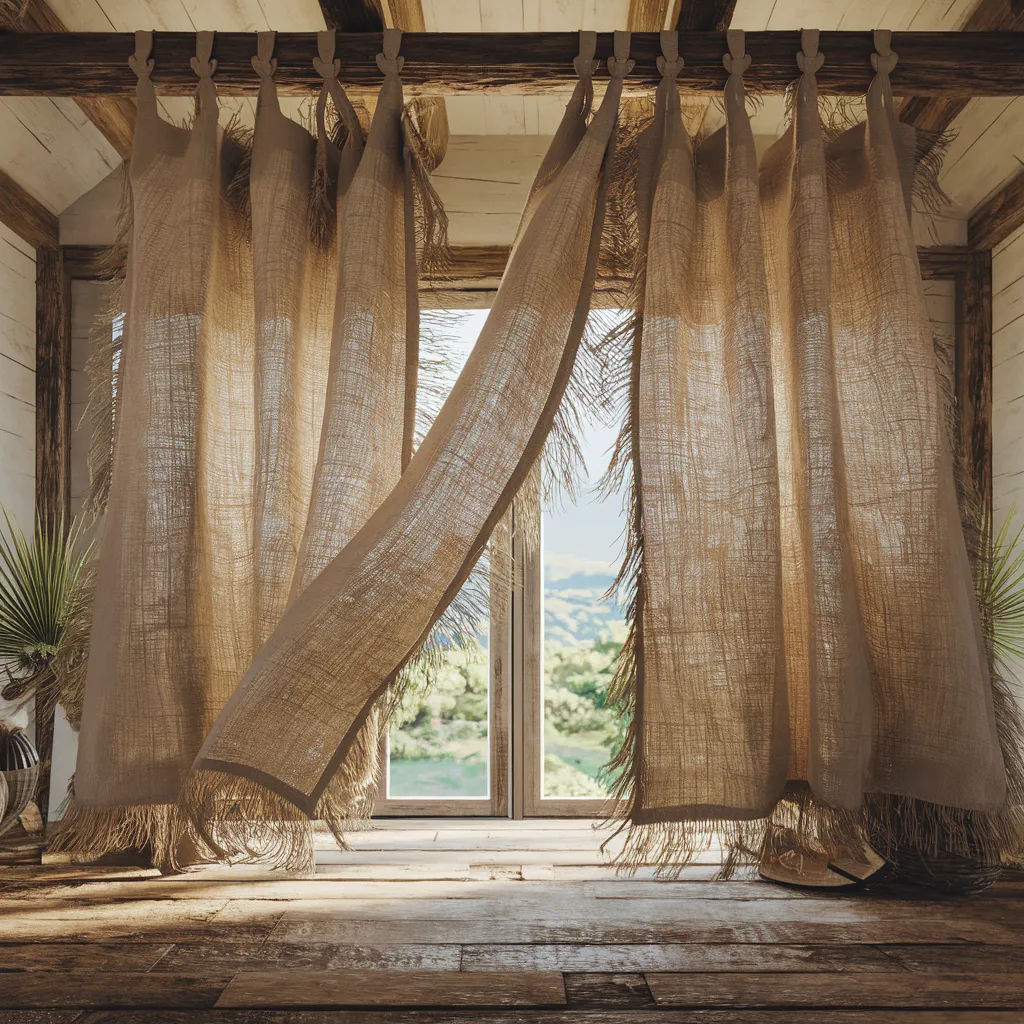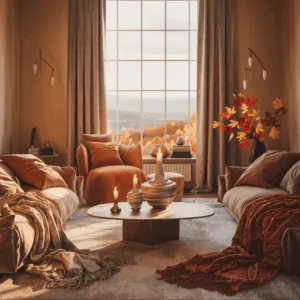In a world that often values perfection and uniformity, a new trend is emerging that celebrates the beauty of imperfection, natural materials, and humble design. The wabi-sabi curtain trend, inspired by the Japanese philosophy of the same name, is capturing the hearts of homeowners and designers alike.
Embracing Imperfection: The Wabi-Sabi Curtain Trend
Wabi-sabi curtains are a manifestation of the Japanese design principle that embraces imperfect beauty, natural materials, weathered textures, and simple, humble design. These curtains are characterized by rustic fabrics like linen, cotton, and hemp, with exposed, even fraying edges and natural, textured materials. According to designer James Gomez, creative director of Yarn Collective, wabi-sabi curtains are not just a strict trend but a shift in attitude towards decorating, where people are seeking interiors that feel authentic and calm. Fabrics play a significant role in achieving this aesthetic.
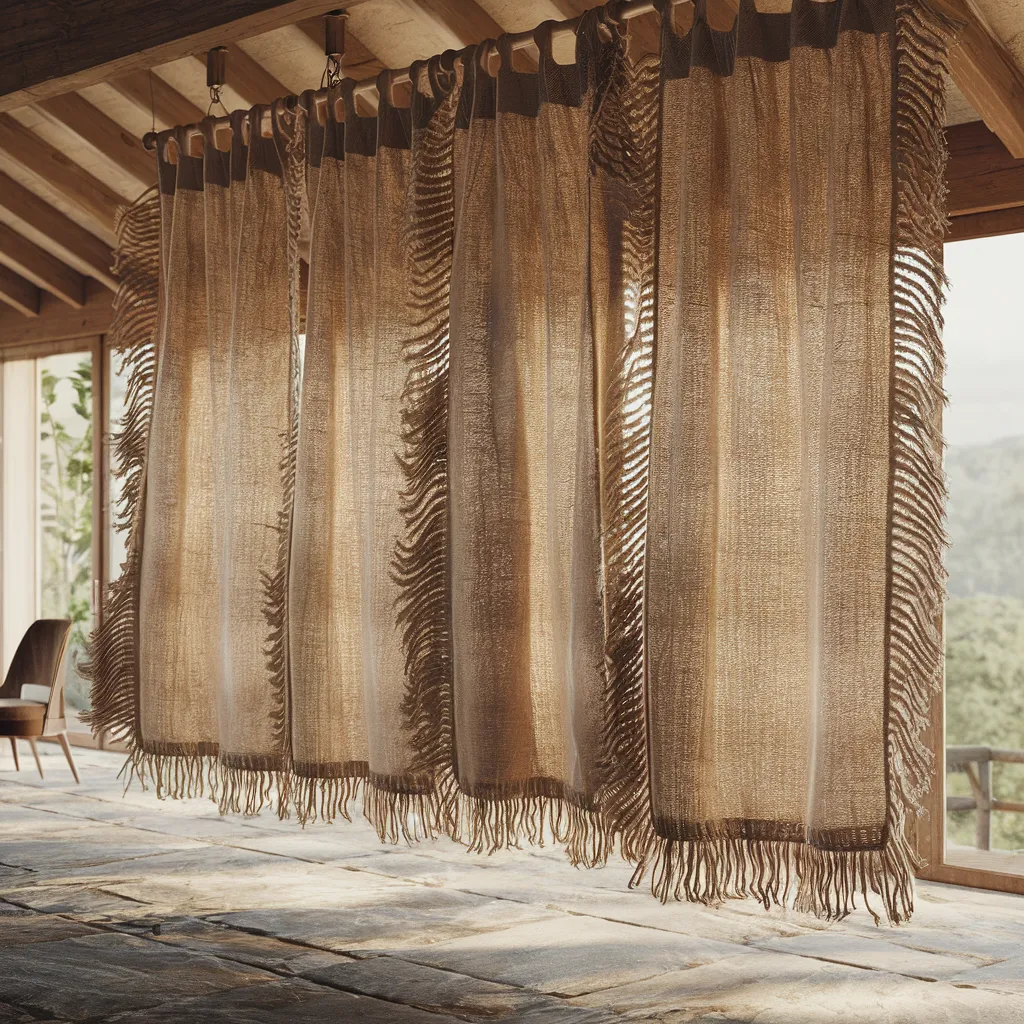
These wabi-sabi inspired curtains feature a raw, organic weave of natural linen or jute, showcasing subtle irregularities that celebrate imperfection. Their earthy brown tones and textured fibers create a warm, grounded atmosphere. Fringed edges and loose threads add an artisanal touch, harmonizing with the rustic wooden interior.
Texture and Tactility: The Essence of Wabi-Sabi Curtains
Unlined or raw-edged curtains become more sensory, creating an atmosphere that celebrates natural texture and the beauty of imperfections. Upholstery expert Pat Giddens describes wabi-sabi curtains as ‘raw or loosely woven fabrics — think handloomed linen, hemp, cotton gauze, muslin, vintage fabrics, velvets, reusing old velvets, antique linen grain sacks, antique laces and trims, or globally sourced textiles, mixing stripes or clashing patterns.’ The key lies in texture and tactility, with natural fibers like loosely woven linens, slubbed cotton, or fabrics with an irregular weave that soften and age beautifully over time. As people crave calm in a digitally saturated world, they’re turning to texture and tactility, and wabi-sabi curtains introduce softness and quiet irregularity that soothe rather than stimulate.
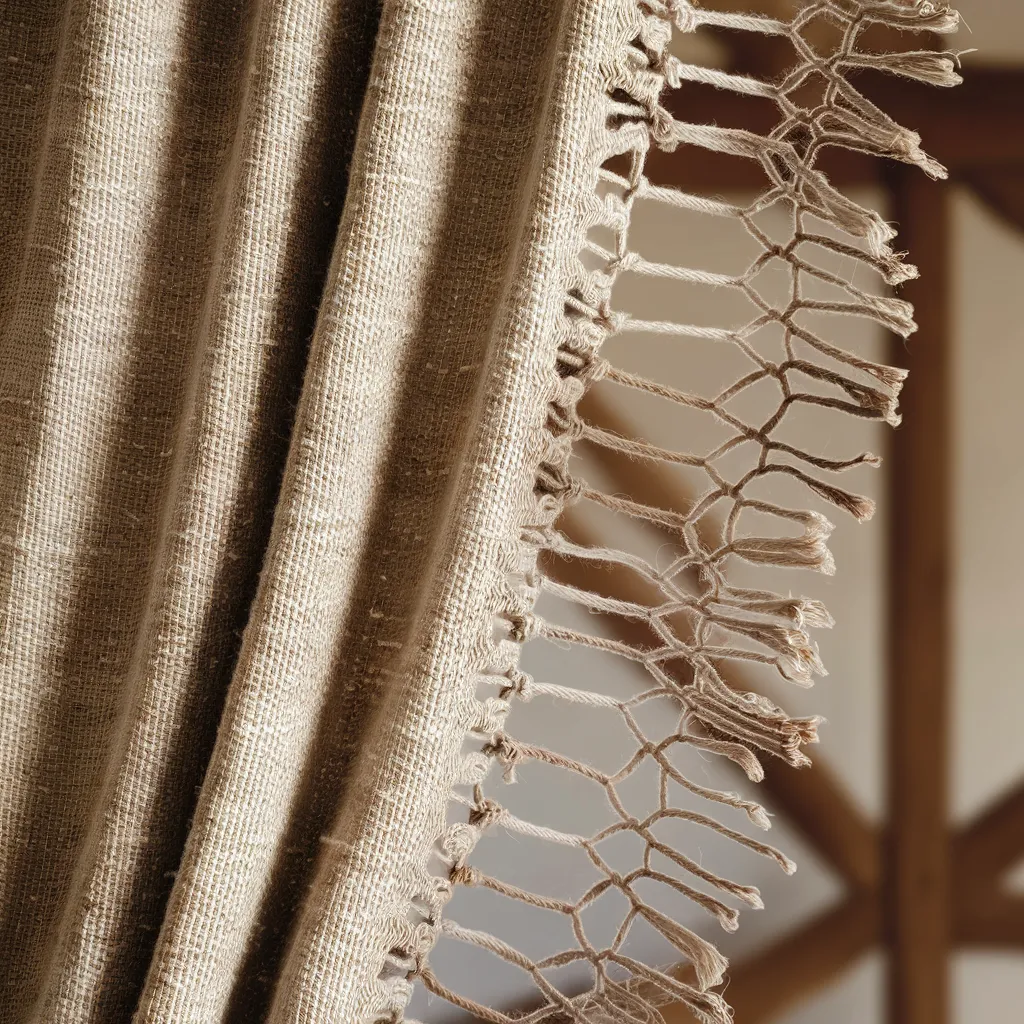
This image showcases beautiful wabi-sabi inspired curtains crafted from natural, undyed linen or cotton fabric in warm beige and cream tones. The material features a loose, organic weave with visible texture variations that celebrate the beauty of imperfection. Hand-knotted macramé fringe adorns the edges, with deliberately irregular twisted cords creating an artisanal, tactile quality. The design embraces natural wrinkles and shadows in the draped folds, embodying the wabi-sabi philosophy of finding elegance in simplicity and the authentic character of raw materials.
Softening Harsh Edges: How Wabi-Sabi Curtains Transform Spaces
Wabi-sabi curtains can transform naturally sunlit spaces into something slightly softer and more calming by allowing light to shine through while softening harsh glare. They complement both minimalist settings and homes with inherent character, softening edges and introducing warmth and ease. Whether in a modern, minimalist space or a rustic, lived-in home, these curtains bring a sense of tranquility and authenticity to any interior.
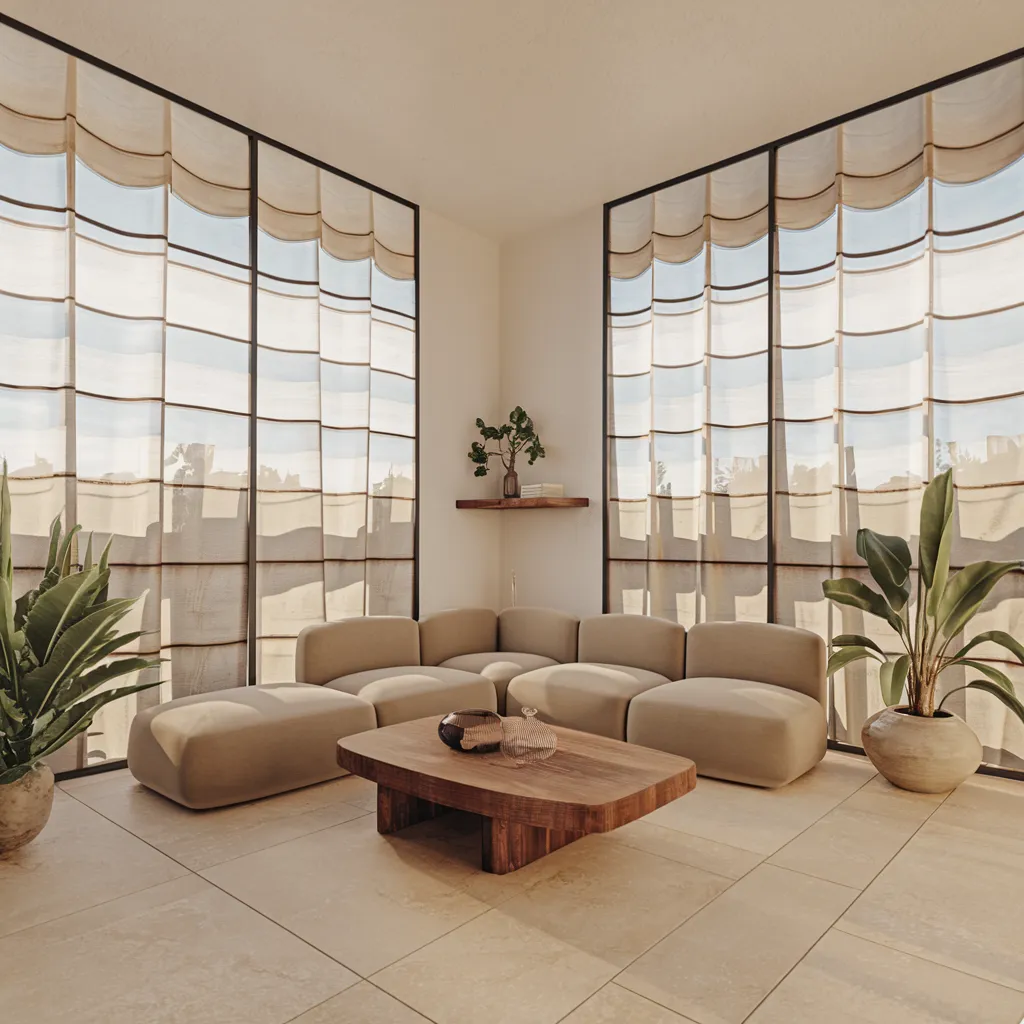
Sheer linen-like curtains filter natural light through gentle, uneven folds, creating a serene and airy atmosphere. Their neutral beige tones and handcrafted feel highlight the wabi-sabi ideal of understated harmony and natural imperfection.
Styling Wabi-Sabi Curtains: Embracing Nature’s Palette
When styling wabi-sabi curtains, designers recommend keeping the color palette grounded in nature, such as chalk, flax, ochre, and soft grays, and mixing subtle tonal variations rather than stark contrasts. Curtains should pool slightly on the floor for a relaxed presence, and minimal hardware like wood or iron rods with visible patina, rope, driftwood, or even natural branches can be used as curtain rods. Clip rings or hand-tied tabs are best for emphasizing the casual look. Pairing wabi-sabi curtains with natural woods, plaster walls, handmade ceramics, or textured upholstery pieces that share the same sense of integrity and touch is recommended.
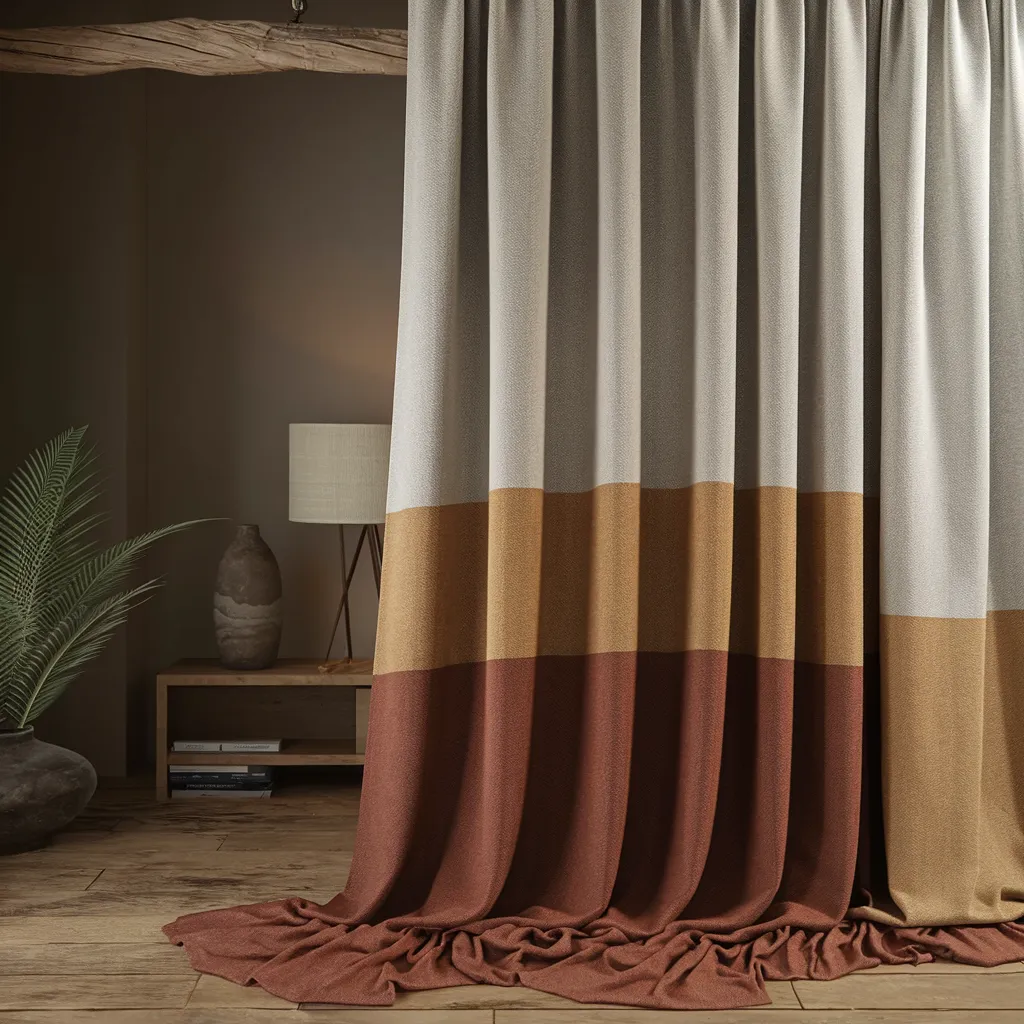
These curtains showcase a minimalist color-block design in earthy hues of cream, ochre, and terracotta. The soft, heavy fabric drapes elegantly, balancing refined simplicity with organic warmth characteristic of wabi-sabi interiors.
The Art of Wabi-Sabi: Mastering Proportion, Drape, and Fiber Choice
While the simplicity of wabi-sabi curtains is deceptive, the success of this style relies on proportion, drape, and fiber choice. Natural fabrics with body and texture thrive in this aesthetic, while synthetics tend to fall flat. The art of wabi-sabi curtains lies in the careful selection of materials that will age gracefully, softening and developing a beautiful patina over time. It’s a celebration of the imperfect, the natural, and the authentic, inviting a sense of calm and tranquility into any space.
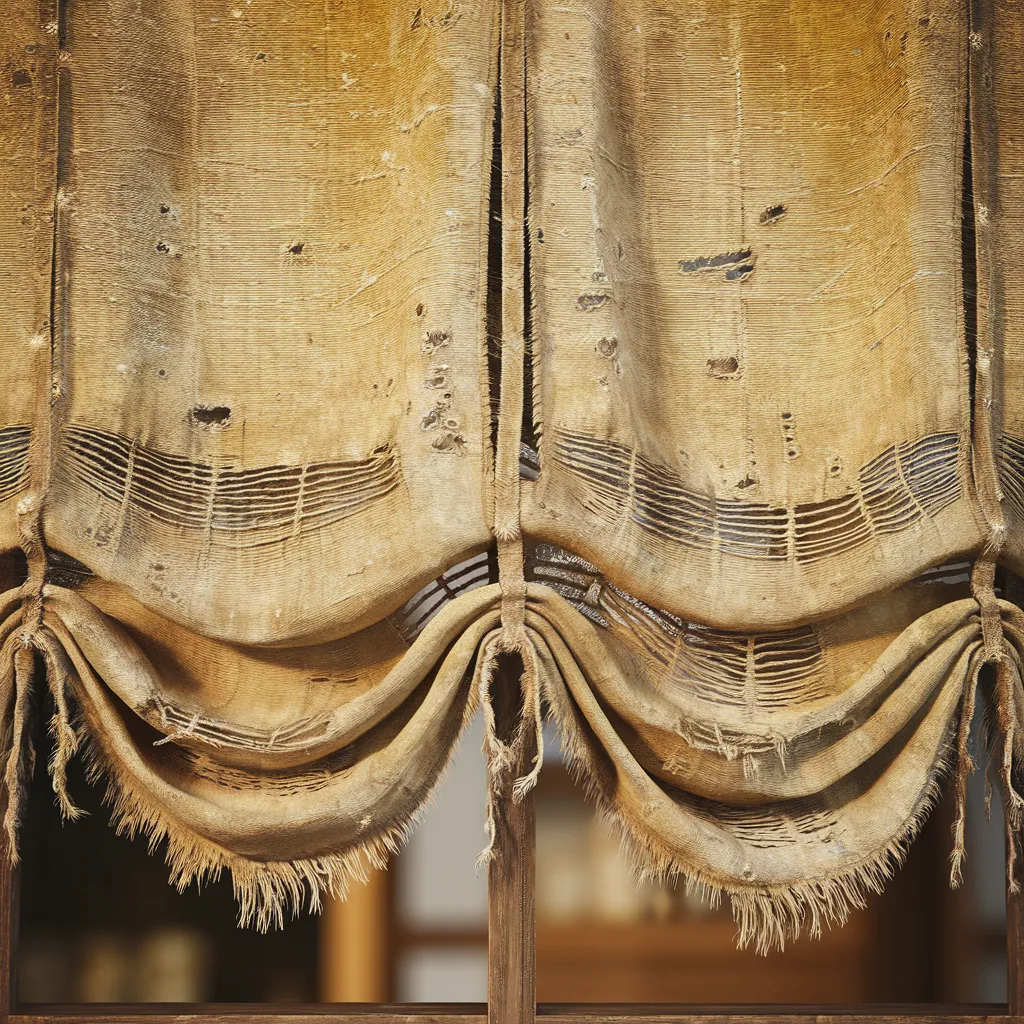
These wabi-sabi curtains feature weathered, distressed fabric with frayed edges and visible tears, embodying the beauty of imperfection. The rough texture and faded golden tones evoke a sense of age, warmth, and natural authenticity.

